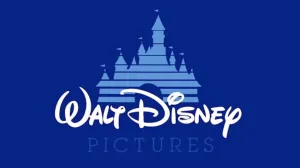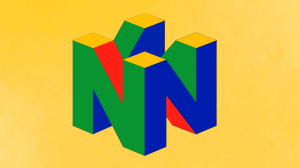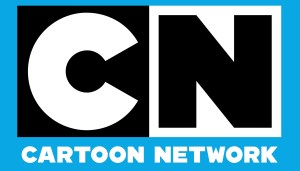
It seems like everyone is reading the twin series forming a relaunch of the X-Men franchise, House of X and Powers of X. This duo’s popularity stems from it being a comprehensive relaunch of the X-Men franchise, one that succeeds in offering a comprehensive vision of the future packed with new ideas that also integrates many characters, stories, and themes from the past. It has only managed to deliver that vision because of the creators involved. There has been a non-standard inclusion amongst the creative credits. In addition to the excellent writer, artists, colorists, and letterers involved, they have also featured designer Tom Muller. Each issue released in the series so far has included at least one infographic filling an entire page or more. They have been utilized to construct timelines, list characters, define vocabulary, and manage lots of other heavy lifting that comes with defining an expansive universe spanning an entire millenium.
Videos by ComicBook.com
Muller’s impressive additions and their integral nature to the story, always included in the midst of typical narrative pages rather than as an addendum or glossary, have called into question whether they are comics pages, inserts, or of some other definition. That question makes sense in the framing of mainstream superhero comics. Almost all of the series published by Marvel and DC Comics across multiple generations of reader have exclusively featured artwork and narratives based upon individually illustrated panels. There have been exceptions to this rule as creators experimented with fumetti and other styles of storytelling, but they have been few and far between. However, both when reading House of X and Powers of X and considering what makes something a comic, graphics like those crafted by Muller are every bit as much a part of the comics medium as the beautiful drawings of the X-Men that surround them.

Fitting the Format
While there’s plenty of minutiae to be debated around the exact definition of the comics medium, a good starting point is established in Scott McCloud’s Understanding Comics, where he writes that comics are “juxtaposed pictorial and other images in deliberate sequence, intended to convey information and/or to produce an aesthetic response in the viewer.” Applying that definition to Muller’s work, the individual graphics could be described as single images rather than juxtaposed ones. The number of elements and reading order could be applied to many splash pages as well. They are still juxtaposed in the same fashion as a splash page though, set side-by-side with sequential pages composed of more than one distinct panel. The juxtaposition of these graphics is not incidental either. All of them arrive in the midst of other story pages, suggesting that they should be read in the order presented as part of the narrative. Additionally, they are typically juxtaposed with standard art sequences in a purposeful fashion. A graphic describing the Seeds of Krakoa arrives just after this concept is mentioned in House of X #1, providing readers with exposition essential to understanding what surrounds it.
The rest of McCloud’s definition is easily met. These graphics are self-evidently images intended to convey information, and Muller’s design for these elements in combination with the formatting and design of each issue delivers a sleek, sci-fi aesthetic.
Muller’s collaborator on these series and many others, writer Jonathan Hickman, has been using graphics in his comics for more than a decade. Early creator-owned concepts, like The Nightly News, delivered graphics throughout each issue and often in the midst of pages with art more like that found in most superhero comics. They also pull into question the nature of small graphic features, like expository panels used to label and describe figures, by expanding on them to a degree where they become independent panels that enhance their juxtaposed narrative while telling their own. While graphics like these may not be the most common form of comics storytelling, there’s no doubt that in these cases they are comics.

Informational Efficiency
Graphics like those found in House of X and Powers of X convey a lot of information with very limited space due to the nature of comics storytelling. They follow the same unspoken rules that allow readers to instantly navigate a page, eyes follow from left to right and top to bottom, with visual cues like strong lines and connected images guiding them to what should be read next. Icons are often used in the place of verbal language, distilling complex ideas, organizations, and individuals into solitary symbols. All of this can be found in the artwork of comics writ large, but these graphics manage to pack an even more focused punch.
They borrow tools more commonly associated with verbal language or mathematics. Lists, organizational charts, and many more concepts used outside of comics become the focus of these pages. They focus readers on the essential information and relationships between different elements. What might take several panels of dialogue to describe, like a laundry list of globally destructive devices, are laid out with utter efficiency. Small highlights even make these lists more manageable by pointing out what is most important to recall.

Variations in Tone and Style
It should not be read as controversial that various infographics convey information well. There is a reason that all of these devices are commonly used in education, private enterprise, and any other endeavor requiring complex understandings of sprawling networks of facts. What really makes this work essential to comics comes near the end of McCloud’s definition on the form, it’s their “aesthetic.”
If the graphics in House of X and Powers of X were simply copy and pasted from an Excel spreadsheet, they would still capably convey the information, but they would also feel apart from the texts in which they are not included. That is not the case. Each page that foregoes characters and plot to provide readers with information fits neatly within the entire issue. They read coherently with the covers and credits pages as an element in a complete package; they also build on the tone of the narrative. This new X-Men story is fascinated with science, long-term impacts, and careful studying of facts and history. That sci-fi conception of the superhero team is matched by graphics that look as cold and calculating as some of the minds at play. In a story about future artificial intelligence, amongst many other ideas, these pages appear to have been constructed by just such an intelligence.
While readers should not expect to see displays like this become a standard in superhero comics, it is refreshing to read these graphics as a reminder for how expansive the comics medium is. We might often enjoy for the purposes of entertainment, but that is in no small part due to how quickly it can tell a story, whether it’s a story filled with characters or data.








